Why You Should Invest in Eco-Friendly Furniture
In a world increasingly aware of the environmental challenges we face, the choice of furniture can seem trivial. However, investing in eco-friendly furniture is not just a trend; it's a conscious decision that can lead to significant benefits for both your home and the planet. Imagine walking into a room filled with beautiful, sustainable pieces that not only look good but also contribute to a healthier environment. This article explores the myriad advantages of opting for eco-friendly furniture, touching on sustainability, health benefits, and aesthetic appeal. By making informed choices, you can positively impact your surroundings and support a greener future.
Understanding the environmental benefits of eco-friendly furniture helps consumers appreciate how their choices contribute to reducing waste, conserving resources, and promoting sustainable practices in the furniture industry. Traditional furniture production often involves harmful practices that lead to deforestation, pollution, and excessive waste. In contrast, eco-friendly furniture is typically made from sustainable materials, such as reclaimed wood or bamboo, which require fewer resources and result in a lower carbon footprint. By choosing eco-friendly options, you are actively participating in the fight against climate change and supporting methods that protect our precious ecosystems.
One of the most compelling reasons to choose eco-friendly furniture is the health advantages it offers. Many conventional furniture pieces are manufactured using toxic chemicals that can off-gas into your home, leading to poor indoor air quality and potential health risks. Eco-friendly furniture often uses non-toxic materials, which can enhance indoor air quality and reduce health risks associated with harmful chemicals found in conventional furniture.
Exploring the types of non-toxic materials commonly used in eco-friendly furniture reveals their advantages for both health and the environment. Materials such as:
- Organic fabrics: Produced without harmful pesticides or synthetic dyes.
- Natural finishes: Like oils and waxes that protect furniture while minimizing chemical exposure.
These materials not only ensure a safer choice for consumers but also promote sustainable agricultural practices, creating a win-win situation for everyone involved.
Natural finishes, like oils and waxes, not only protect the furniture but also contribute to a healthier indoor environment by minimizing chemical exposure. Unlike traditional varnishes and paints that can release harmful VOCs, these natural alternatives help maintain a safe living space, allowing you to breathe easier and feel more comfortable in your home.
Organic fabrics are produced without harmful pesticides or synthetic dyes, ensuring a safer choice for consumers and promoting sustainable agricultural practices. By opting for furniture upholstered in organic materials, you can enjoy the comfort and beauty of your furniture without compromising your health.
Investing in eco-friendly furniture can significantly improve indoor air quality, as these products are less likely to emit volatile organic compounds (VOCs) that can be harmful to health. With improved air quality, you and your family can enjoy a healthier living environment, reducing the risk of respiratory issues and other health concerns.
Eco-friendly furniture is often designed with durability in mind, using sustainable materials that can withstand wear and tear, leading to a longer lifespan and less frequent replacements. This means that while the initial investment may be higher, the long-term benefits are substantial. You won’t just be buying furniture; you’ll be investing in pieces that stand the test of time.
High-quality craftsmanship is a hallmark of many eco-friendly furniture options, ensuring that products are built to last and offer lasting value to consumers. When you choose eco-friendly furniture, you're not just purchasing an item; you're acquiring a piece of art that tells a story of sustainability and dedication to quality.
While the initial investment may be higher, eco-friendly furniture can be more cost-effective over time due to its durability and reduced need for replacements. Think of it as spending less over time, as you won’t be frequently buying new pieces to replace those that wear out quickly.
Eco-friendly furniture often features unique designs and natural materials, adding a distinctive aesthetic to homes while promoting a sustainable lifestyle. The beauty of these pieces lies not only in their functionality but also in their ability to connect us to nature, creating a harmonious living space.
Many eco-friendly pieces boast timeless designs that blend seamlessly with various interior styles, enhancing the overall aesthetic of any space. From modern minimalism to rustic charm, there's an eco-friendly option for every taste.
The use of natural materials in eco-friendly furniture not only provides visual warmth but also connects homeowners to nature, creating a calming environment. Imagine a living room adorned with furniture crafted from reclaimed wood, exuding character and history while being environmentally responsible.
By choosing eco-friendly furniture, consumers support companies that prioritize sustainable practices, contributing to a greener economy and encouraging the industry to adopt more environmentally friendly methods. Your choices matter, and they can drive change in the furniture industry.
Ethical sourcing ensures that materials used in furniture production are obtained responsibly, protecting ecosystems and communities involved in the supply chain. By supporting brands that prioritize ethical practices, you can feel good about your purchases.
Supporting local artisans who create eco-friendly furniture fosters community growth and encourages traditional craftsmanship, promoting a sustainable economy. When you buy from local makers, you're not just getting a unique piece; you're also helping to sustain local economies and preserve traditional skills.
Investing in eco-friendly furniture is not only a personal choice but a collective step towards a healthier planet. By choosing sustainable options, you showcase the importance of sustainability in our everyday lives, setting an example for others to follow. So, the next time you're in the market for new furniture, remember that your choices can make a difference.
- What is eco-friendly furniture? Eco-friendly furniture is made from sustainable materials and processes that minimize environmental impact.
- Is eco-friendly furniture more expensive? While the upfront cost may be higher, eco-friendly furniture can save you money in the long run due to its durability.
- How can I tell if furniture is eco-friendly? Look for certifications and labels that indicate sustainable sourcing, non-toxic materials, and ethical manufacturing practices.
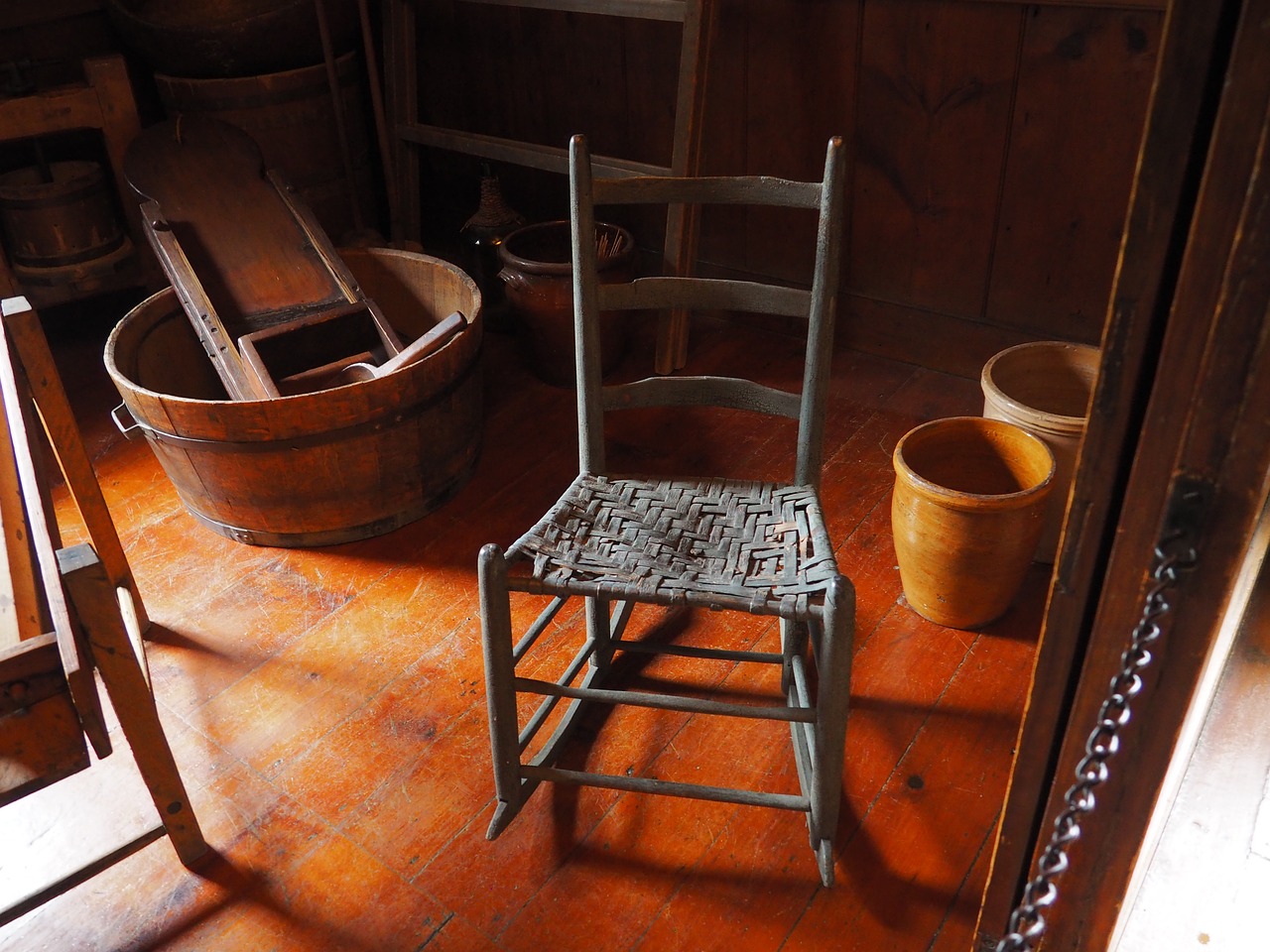
The Environmental Impact
When it comes to making choices for our homes, the impact of those decisions on the environment is often overlooked. Eco-friendly furniture serves as a powerful reminder that our choices can make a significant difference. By opting for furniture made from sustainable materials, you are not just enhancing your living space; you are actively participating in a movement that aims to reduce waste and conserve precious resources. Imagine a world where every piece of furniture contributes to a healthier planet—this is the vision that eco-friendly furniture brings to life.
One of the primary benefits of choosing eco-friendly furniture is the reduction of waste. Traditional furniture production often involves processes that generate a substantial amount of waste, from the raw materials to the manufacturing phase. In contrast, eco-friendly manufacturers prioritize sustainable practices that minimize waste, such as using reclaimed wood or recycled materials. This not only reduces the burden on landfills but also conserves the natural resources that would otherwise be depleted in the production of new materials.
Moreover, the furniture industry has a notorious reputation for being resource-intensive. From deforestation to excessive water usage, the environmental toll is staggering. By choosing eco-friendly options, you are supporting practices that promote sustainable forestry and responsible sourcing. For instance, many eco-friendly furniture brands adhere to strict guidelines that ensure their materials are sourced from forests that are managed sustainably, safeguarding biodiversity and preventing habitat destruction.
Another critical aspect of the environmental impact is the carbon footprint associated with furniture production and transportation. Eco-friendly furniture often involves local artisans and manufacturers, which helps reduce the distance products must travel. This not only supports local economies but also significantly cuts down on greenhouse gas emissions. To put this into perspective, consider the following:
| Furniture Type | Average Carbon Footprint (kg CO2) | Eco-Friendly Alternative | Reduced Footprint (kg CO2) |
|---|---|---|---|
| Conventional Furniture | 200 | Locally Sourced Eco-Friendly Furniture | 50 |
This table illustrates that the carbon footprint of conventional furniture is significantly higher compared to its eco-friendly counterparts, which not only utilize sustainable materials but also favor local production. By making a conscious choice to invest in eco-friendly furniture, you are not just beautifying your home; you are also making a positive impact on the environment.
In summary, the environmental impact of choosing eco-friendly furniture goes far beyond aesthetics. It encompasses a commitment to sustainability, resource conservation, and community support. Every piece of eco-friendly furniture tells a story of responsible sourcing and mindful production, allowing consumers to feel good about their purchases. So, the next time you're in the market for new furniture, remember that your choices can lead to a cleaner, greener planet.
- What materials are typically used in eco-friendly furniture? Eco-friendly furniture is often made from sustainable materials such as reclaimed wood, bamboo, and organic fabrics.
- How does eco-friendly furniture improve indoor air quality? Eco-friendly furniture usually contains fewer volatile organic compounds (VOCs), which can enhance the air quality in your home.
- Is eco-friendly furniture more expensive? While the initial cost may be higher, eco-friendly furniture often proves to be more cost-effective in the long run due to its durability.
- Can I find eco-friendly furniture that matches my style? Absolutely! Many eco-friendly furniture pieces come in a variety of designs and styles to suit any home decor.
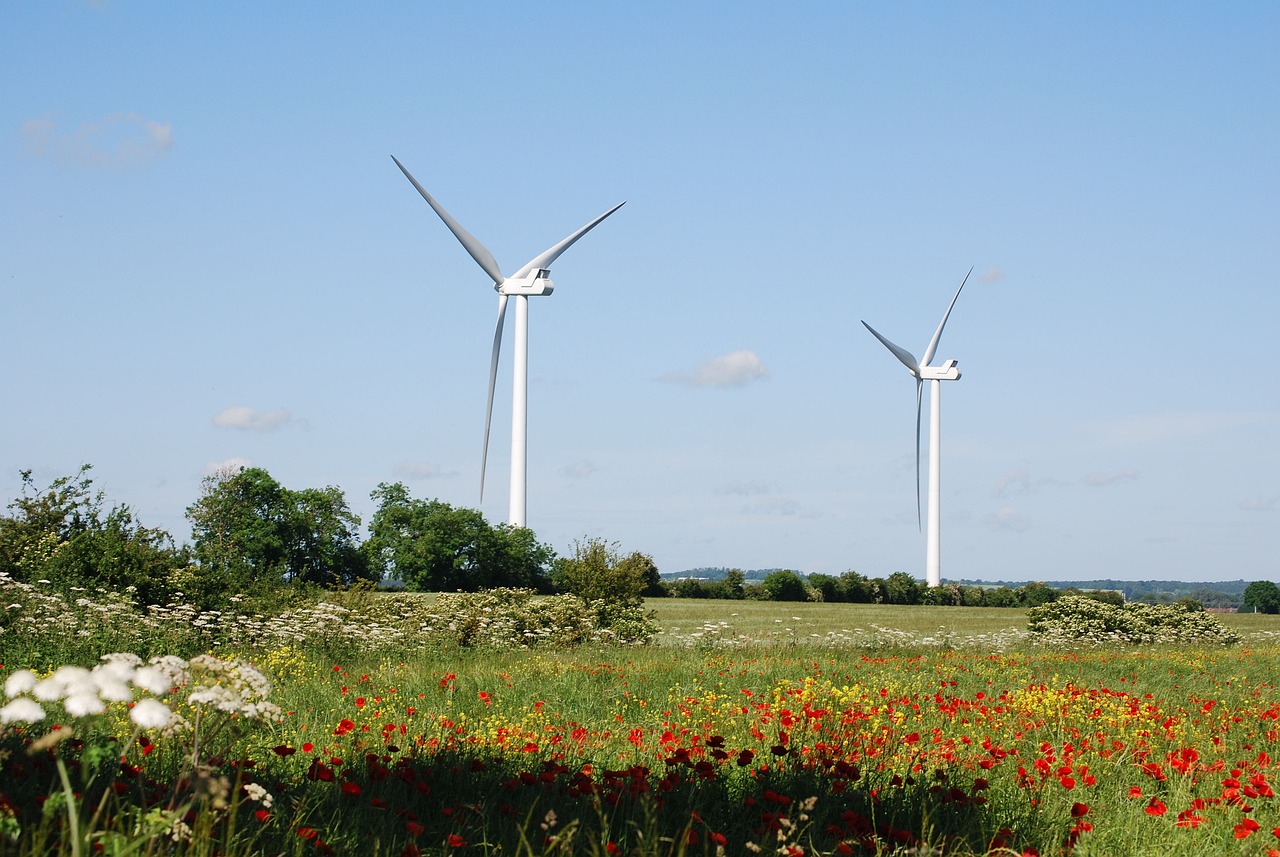
Health Benefits
When it comes to furnishing our homes, we often overlook the impact that our choices have on our health. However, investing in eco-friendly furniture can lead to significant health benefits, primarily due to the use of non-toxic materials. Conventional furniture often contains harmful chemicals that can affect indoor air quality and, ultimately, our well-being. By choosing eco-friendly options, you are opting for a healthier lifestyle that prioritizes your family's safety.
One of the most compelling reasons to consider eco-friendly furniture is the use of non-toxic materials. These materials, such as organic fabrics and natural finishes, not only reduce exposure to harmful substances but also promote a healthier living environment. For instance, many eco-friendly furniture pieces are made from sustainably sourced wood, which is treated with natural oils and waxes instead of synthetic chemicals. This choice not only protects the wood but also minimizes the release of volatile organic compounds (VOCs) that can be detrimental to your health.
Exploring the types of non-toxic materials commonly found in eco-friendly furniture reveals a treasure trove of options. For example, organic fabrics are produced without harmful pesticides or synthetic dyes. This means that not only are you making a safer choice for your home, but you're also supporting sustainable agricultural practices. These fabrics offer a soft, luxurious feel while ensuring that your indoor environment remains free from toxic chemicals.
Natural finishes like oils and waxes serve a dual purpose: they protect your furniture while also contributing to a healthier indoor environment. Unlike traditional finishes that may emit harmful fumes, natural finishes are safe and environmentally friendly. This means you can enjoy your beautiful furniture without worrying about the negative effects of chemical exposure.
In addition to natural finishes, organic fabrics are another key component of eco-friendly furniture. These fabrics are produced without the use of harmful pesticides or synthetic dyes, making them a safer option for your home. Not only do they enhance the aesthetic appeal of your space, but they also promote sustainable agricultural practices, which is a win-win for both your health and the environment.
One of the most significant benefits of investing in eco-friendly furniture is the improvement in indoor air quality. Many traditional furniture pieces emit VOCs, which can lead to a range of health issues, including headaches, dizziness, and respiratory problems. In contrast, eco-friendly furniture is less likely to emit these harmful compounds, creating a safer environment for you and your family. Imagine walking into your home and breathing in fresh, clean air, free from the toxins that often accompany conventional furnishings. It's a breath of fresh air, quite literally!
In conclusion, the health benefits of eco-friendly furniture extend far beyond aesthetics. By choosing non-toxic materials, you are making a conscious decision to improve your indoor environment and protect your family's health. It's not just about what looks good in your home; it's about creating a space that enhances your well-being.
- What are the main benefits of eco-friendly furniture? Eco-friendly furniture promotes better health through non-toxic materials, improves indoor air quality, and supports sustainable practices.
- How can I identify eco-friendly furniture? Look for certifications such as FSC (Forest Stewardship Council) and GOTS (Global Organic Textile Standard) that indicate sustainable sourcing and production methods.
- Is eco-friendly furniture more expensive? While the initial cost may be higher, the durability and longevity of eco-friendly furniture often make it more cost-effective in the long run.
- Can eco-friendly furniture be stylish? Absolutely! Many eco-friendly options feature unique designs and natural materials that add aesthetic appeal to any home.
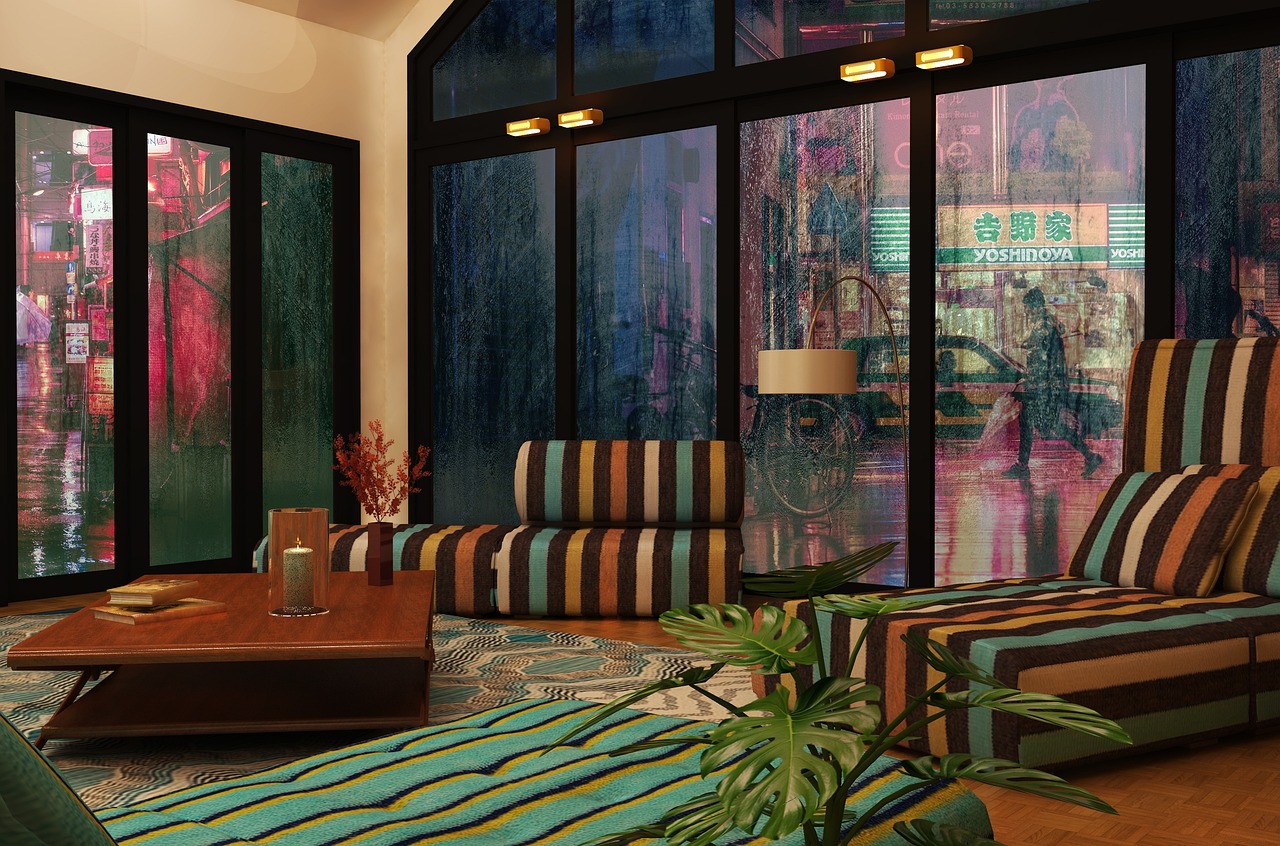
Non-Toxic Materials
When it comes to eco-friendly furniture, one of the standout features is the use of . These materials are not only better for the environment but also significantly enhance the health and safety of your home. Imagine walking into a room filled with furniture that doesn't off-gas harmful chemicals; it’s like a breath of fresh air! This shift towards non-toxic alternatives is a game changer, especially for families with children or pets, where the stakes are even higher.
Common non-toxic materials found in eco-friendly furniture include organic fabrics, natural finishes, and sustainably sourced wood. Each of these materials comes with its own set of advantages:
- Organic Fabrics: These materials are produced without the use of harmful pesticides or synthetic dyes. Think of them as the cotton candy of the fabric world – sweet, safe, and oh-so-comfortable. They not only feel great against your skin but also promote sustainable agricultural practices.
- Natural Finishes: Instead of harsh chemicals, these finishes utilize natural oils and waxes. They protect your furniture while keeping your indoor environment healthy. It’s like putting a protective shield around your pieces, ensuring they remain both beautiful and safe.
- Sustainably Sourced Wood: When you choose furniture made from wood that’s harvested responsibly, you’re not just getting a piece of furniture; you’re investing in the planet's future. This wood is often sourced from forests that are managed sustainably, ensuring that trees are replanted and ecosystems are preserved.
By opting for furniture made from these non-toxic materials, you’re making a conscious decision to reduce your exposure to harmful chemicals. Traditional furniture often contains volatile organic compounds (VOCs) that can lead to a range of health issues, from headaches to more severe respiratory problems. On the contrary, eco-friendly options allow you to enjoy your living space without the worry of hidden toxins. It’s a win-win situation!
Moreover, the aesthetic appeal of non-toxic materials cannot be overlooked. They often have a unique, organic look that adds character to your home. Whether it's the rich texture of organic cotton or the warm tones of sustainably sourced wood, these materials create an inviting atmosphere that resonates with nature. So, not only are you making a healthier choice, but you’re also enhancing the beauty of your living space.
In conclusion, investing in eco-friendly furniture made from non-toxic materials is a decision that benefits both your health and the environment. It’s about creating a safe haven for you and your loved ones while making a positive impact on the planet. So, next time you’re shopping for furniture, remember to look for those non-toxic labels – your home and the Earth will thank you!
1. What are non-toxic materials?
Non-toxic materials are those that do not emit harmful chemicals or pollutants into the air. They are safer for both human health and the environment.
2. Why should I choose eco-friendly furniture?
Choosing eco-friendly furniture helps reduce your exposure to toxins, supports sustainable practices, and contributes to a healthier planet.
3. How can I tell if furniture is eco-friendly?
Look for certifications such as GREENGUARD, FSC (Forest Stewardship Council), or labels indicating organic materials. Always check the product descriptions for non-toxic claims.
4. Are eco-friendly furniture options more expensive?
While the initial investment may be higher, eco-friendly furniture often lasts longer and requires fewer replacements, making it more cost-effective in the long run.

Natural Finishes
When it comes to eco-friendly furniture, play a pivotal role in enhancing not just the aesthetics but also the health benefits of your home. Unlike conventional finishes that often contain harmful chemicals, natural finishes like oils and waxes are derived from sustainable sources. They not only protect the wood but also ensure that your living space remains free from toxic fumes. Imagine walking into your home and being greeted by the warm, inviting scent of natural oils instead of the harsh smell of synthetic varnishes. It’s a breath of fresh air—literally!
Natural finishes provide a protective layer that enhances the beauty of the wood grain, allowing the natural character of the material to shine through. This means each piece of furniture is unique, offering a one-of-a-kind look that can’t be replicated. Consider how a beautifully finished wooden table can become a focal point in your dining room, sparking conversations and creating memories. The charm of natural finishes lies in their ability to age gracefully, developing a rich patina over time that adds to their appeal.
Moreover, using natural finishes contributes to a healthier indoor environment. Many conventional finishes release volatile organic compounds (VOCs) into the air, which can lead to a variety of health issues, including headaches, dizziness, and respiratory problems. In contrast, natural finishes are typically low in VOCs, making them a safer choice for households, especially those with children or pets. By opting for furniture finished with natural products, you’re not just making a style choice; you’re actively promoting a healthier living space.
Here’s a quick comparison of some common natural finishes:
| Finish Type | Source | Benefits |
|---|---|---|
| Tung Oil | Tung tree seeds | Water-resistant, enhances grain |
| Linseed Oil | Flax seeds | Non-toxic, easy to apply |
| Beeswax | Bees | Natural shine, moisture barrier |
In conclusion, choosing furniture with natural finishes is a decision that benefits both your home and the environment. It’s a small step that can lead to significant changes in your health and well-being. So, next time you’re shopping for furniture, consider the impact of your choices. After all, a beautifully finished piece not only adds character to your space but also contributes to a healthier, more sustainable lifestyle.
- What are natural finishes? Natural finishes are coatings made from organic materials, such as oils and waxes, that protect and enhance the beauty of wood without harmful chemicals.
- Are natural finishes safe for children and pets? Yes, natural finishes typically have low or no VOCs, making them a safer choice for households with children and pets.
- How do I maintain furniture with natural finishes? Regular dusting and occasional reapplication of the finish can help maintain the beauty and integrity of your furniture.

Organic Fabrics
When it comes to creating a comfortable and healthy living environment, the choice of fabric plays a crucial role. are a game changer in the world of eco-friendly furniture. Unlike conventional materials, organic fabrics are produced without the use of harmful pesticides, synthetic fertilizers, or toxic dyes. This means that not only are they better for the environment, but they also provide a safer choice for your home. Imagine wrapping yourself in a soft, breathable fabric that doesn’t release harmful chemicals into your air—sounds appealing, right?
One of the standout features of organic fabrics is their commitment to sustainability. These materials are often made from renewable resources, such as cotton, linen, or hemp, which are grown using methods that respect the earth. By choosing organic, you are supporting practices that enhance soil health, conserve water, and reduce pollution. It’s like giving a high-five to Mother Nature every time you lounge on your couch!
But what about the aesthetics? Organic fabrics don’t skimp on style. They come in a variety of textures and colors, allowing you to express your personal taste while making an eco-conscious choice. Whether you prefer the rustic charm of hemp or the luxurious feel of organic cotton, there’s something for everyone. Plus, these fabrics age beautifully, adding character to your furniture over time.
Here are some common types of organic fabrics you might encounter:
- Organic Cotton: Soft, durable, and versatile, it’s perfect for upholstery and cushions.
- Hemp: Known for its strength and durability, hemp is an excellent choice for furniture that sees a lot of use.
- Linen: Made from flax plants, linen is breathable and has a natural luster that adds elegance to any room.
Choosing organic fabrics also supports ethical labor practices. Many manufacturers prioritize fair wages and safe working conditions for their workers, ensuring that your purchase contributes to a more equitable economy. By opting for eco-friendly furniture upholstered in organic fabrics, you are not just enhancing your home; you are also making a statement about your values.
In summary, organic fabrics offer a trifecta of benefits: they are safe for your health, kind to the planet, and stylish enough to elevate your decor. So, the next time you’re shopping for furniture, consider the fabric that wraps around it. Your home—and the environment—will thank you!
Q: What makes organic fabrics different from conventional fabrics?
A: Organic fabrics are produced without harmful chemicals, pesticides, or synthetic dyes, making them safer for both the environment and human health.
Q: Are organic fabrics more expensive?
A: While the initial cost may be higher, organic fabrics often last longer and contribute to a healthier living space, making them a worthwhile investment in the long run.
Q: Can I find organic fabrics in various styles and colors?
A: Absolutely! Organic fabrics come in a wide range of styles, textures, and colors, allowing you to find the perfect match for your home decor.
Q: How do I care for organic fabrics?
A: Caring for organic fabrics is similar to caring for conventional fabrics. Always check the care label, but generally, it’s best to wash them in cold water and avoid harsh chemicals.
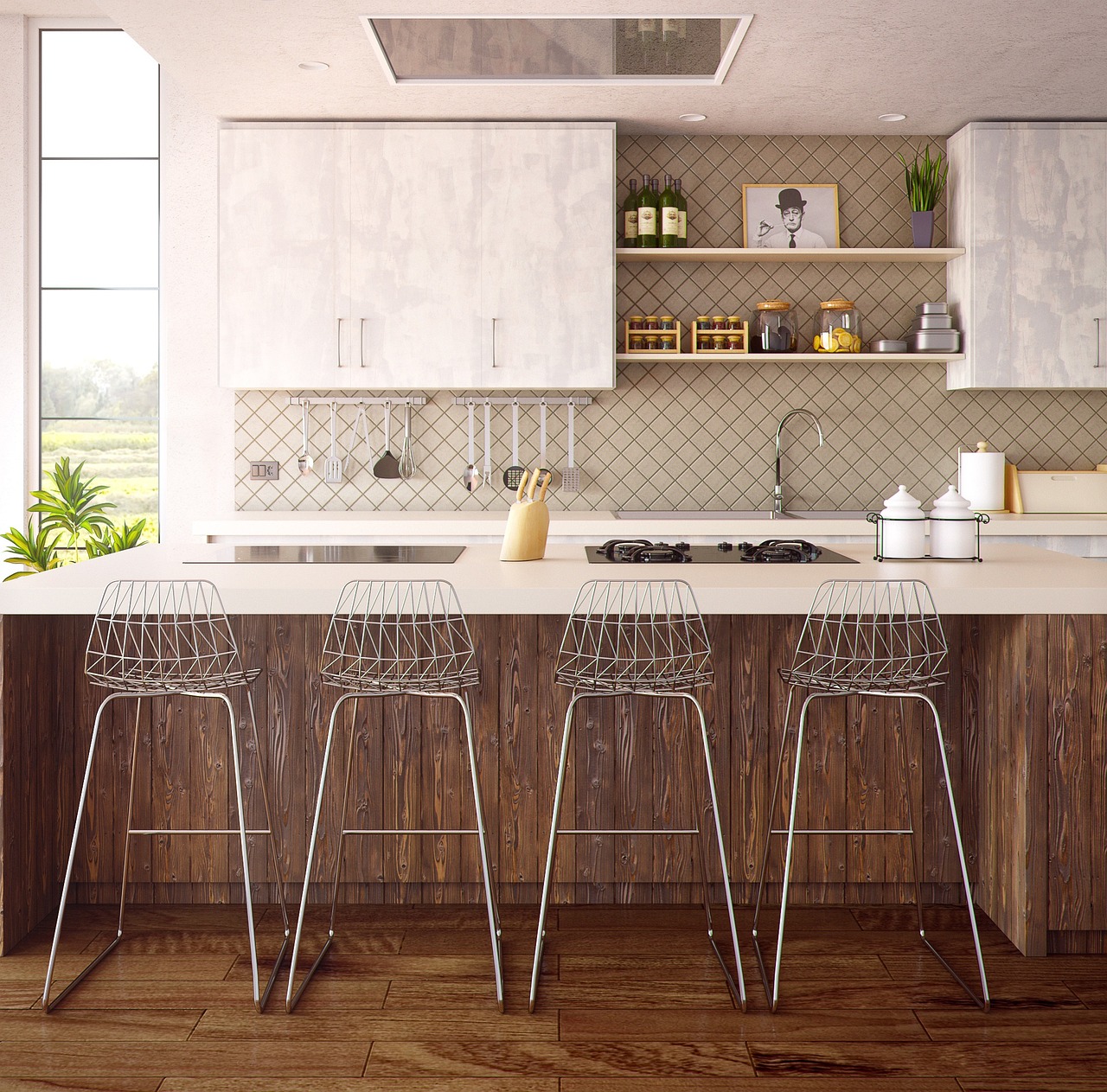
Improved Indoor Air Quality
When it comes to creating a comfortable and healthy living space, indoor air quality plays a crucial role. One of the standout benefits of investing in eco-friendly furniture is its ability to significantly enhance the air quality in your home. Traditional furniture often contains synthetic materials and finishes that can release volatile organic compounds (VOCs), which are harmful to both our health and the environment. These VOCs can cause a range of issues, from headaches and dizziness to long-term respiratory problems. In contrast, eco-friendly furniture is crafted from natural, non-toxic materials that are less likely to emit these harmful substances.
Imagine walking into your home and taking a deep breath, feeling refreshed rather than overwhelmed by chemical odors. This is the reality that eco-friendly furniture can offer. By choosing pieces made from organic materials, you are not just making a style choice; you are actively promoting a healthier living environment. For instance, many eco-friendly options utilize natural woods, organic fabrics, and low-VOC finishes, all of which contribute to a cleaner indoor atmosphere.
Additionally, the improved indoor air quality associated with eco-friendly furniture can lead to better overall health. Studies have shown that a reduction in indoor air pollutants can decrease the risk of allergies and asthma attacks. This is especially important for families with young children or individuals with pre-existing health conditions. By surrounding ourselves with non-toxic materials, we are essentially creating a sanctuary within our homes.
Moreover, the benefits of eco-friendly furniture extend beyond just aesthetics and health. They also promote sustainability. By choosing products that are made with the environment in mind, we are supporting manufacturers who prioritize ethical practices and sustainable sourcing. This not only helps to reduce our carbon footprint but also encourages the industry to move towards more eco-conscious methods.
In conclusion, investing in eco-friendly furniture is a smart choice for anyone looking to improve their indoor air quality. The combination of non-toxic materials, reduced VOC emissions, and a commitment to sustainability makes these pieces a win-win for both your health and the planet. So, the next time you're considering a new furniture purchase, remember that your choice can make a significant difference in the air you breathe and the environment you live in.
- What are VOCs and why are they harmful? VOCs are chemicals that can evaporate into the air from certain materials and products, leading to indoor air pollution and various health issues.
- How can I tell if furniture is eco-friendly? Look for certifications such as FSC (Forest Stewardship Council) for wood products or OEKO-TEX for textiles, which indicate sustainable practices.
- Is eco-friendly furniture more expensive? While the initial cost may be higher, eco-friendly furniture often lasts longer, making it a more cost-effective choice in the long run.
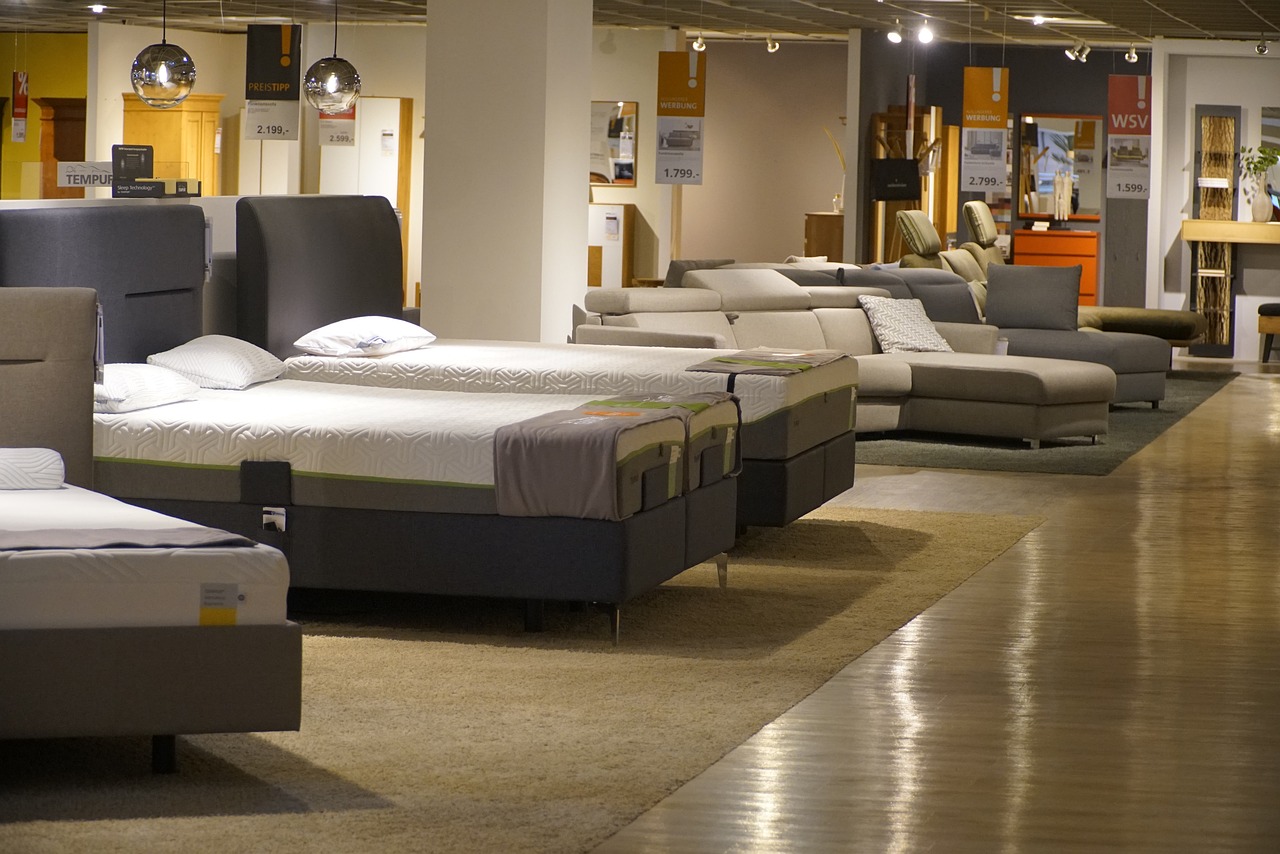
Durability and Longevity
When it comes to furniture, durability and longevity are two critical factors that every consumer should consider. Eco-friendly furniture shines in these areas, utilizing sustainable materials that are not only kind to the planet but also built to last. Imagine investing in a piece of furniture that not only enhances your home’s aesthetic but also stands the test of time—this is precisely what eco-friendly options offer. They are designed with resilience in mind, often crafted from materials like reclaimed wood, bamboo, or recycled metals, which can endure everyday wear and tear much better than conventional alternatives.
One of the standout features of eco-friendly furniture is its commitment to quality craftsmanship. Many manufacturers prioritize artisanal techniques, ensuring that each piece is not just a product but a work of art. This attention to detail translates into furniture that can withstand the rigors of daily life, whether it's a coffee table that endures the chaos of family gatherings or a sofa that remains comfortable after years of use. The result? You save money in the long run because you won’t need to replace your furniture as frequently.
Moreover, the initial investment in eco-friendly furniture may seem higher compared to traditional options, but consider it a long-term savings plan. Here’s a simple breakdown:
| Type of Furniture | Initial Cost | Average Lifespan | Replacement Frequency |
|---|---|---|---|
| Eco-Friendly Furniture | Higher | 15-20 years | Every 15-20 years |
| Traditional Furniture | Lower | 5-10 years | Every 5-10 years |
This table illustrates how eco-friendly furniture, despite its higher upfront cost, can lead to significant savings over time due to its longevity. By choosing these sustainable options, you’re not just making a purchase; you’re making an investment in quality that pays off in the long run.
In conclusion, the durability and longevity of eco-friendly furniture make it a wise choice for consumers who value both sustainability and practicality. By opting for these long-lasting pieces, you not only enhance your living space but also contribute to a more sustainable future.
- What materials are commonly used in eco-friendly furniture?
Eco-friendly furniture often uses materials like reclaimed wood, bamboo, organic fabrics, and recycled metals. - How can I tell if furniture is eco-friendly?
Look for certifications such as FSC (Forest Stewardship Council) or GREENGUARD, which indicate sustainable practices. - Is eco-friendly furniture more expensive?
While the initial cost may be higher, the durability and longevity of eco-friendly furniture often result in long-term savings. - How does eco-friendly furniture improve indoor air quality?
Eco-friendly furniture typically uses non-toxic materials that emit fewer volatile organic compounds (VOCs), enhancing air quality.

Quality Craftsmanship
When it comes to eco-friendly furniture, is a defining characteristic that sets these pieces apart from their mass-produced counterparts. Imagine walking into a room filled with furniture that not only looks stunning but also tells a story of dedication and skill. Each piece of eco-friendly furniture is often crafted by artisans who pour their heart and soul into their work, ensuring that what you bring into your home is not just another item, but a masterpiece.
These artisans typically use traditional techniques combined with modern innovations, allowing for a level of detail and durability that is hard to find in standard furniture. Think of it this way: just as a chef selects the finest ingredients to create a delicious meal, these craftsmen choose sustainable materials that not only look good but also stand the test of time. This means that your eco-friendly furniture is not just an investment in style, but also in longevity and functionality.
Moreover, the emphasis on quality craftsmanship often leads to unique designs that are simply not available in mass-produced items. Each piece has its own character, reflecting the natural beauty of the materials used. For instance, reclaimed wood might showcase beautiful knots and grains that tell a story of its past life. This individuality adds a personal touch to your home, making it feel warm and inviting.
In addition, investing in well-crafted furniture means less waste. High-quality items are less likely to break or wear out quickly, which ultimately translates to fewer replacements over time. This not only saves you money but also reduces the environmental impact associated with manufacturing and disposing of furniture. It's a win-win situation!
To illustrate the difference in quality, consider the following comparison:
| Feature | Eco-Friendly Furniture | Mass-Produced Furniture |
|---|---|---|
| Materials | Sustainable, non-toxic | Often synthetic, harmful chemicals |
| Durability | Built to last | Often flimsy, short lifespan |
| Design | Unique, artisanal | Generic, mass-produced |
| Environmental Impact | Low, promotes sustainability | High, contributes to waste |
In conclusion, when you invest in eco-friendly furniture, you're not just purchasing a product; you're supporting a philosophy of quality and sustainability. You're choosing pieces that will not only enhance the beauty of your home but also contribute positively to the environment. So, next time you're on the hunt for new furniture, remember the importance of quality craftsmanship and how it can transform your living space into a haven of elegance and eco-consciousness.
- What materials are commonly used in eco-friendly furniture? Eco-friendly furniture often utilizes sustainable materials such as reclaimed wood, bamboo, and organic fabrics.
- How can I ensure that the furniture I buy is truly eco-friendly? Look for certifications such as FSC (Forest Stewardship Council) or GREENGUARD, which indicate sustainable practices.
- Is eco-friendly furniture more expensive? While the initial cost may be higher, the durability and longevity of eco-friendly furniture often make it more cost-effective in the long run.
- Can eco-friendly furniture fit into any home style? Absolutely! Many eco-friendly pieces feature timeless designs that can complement various interior aesthetics.

Cost-Effectiveness
When it comes to furniture, many people often focus on the initial price tag, but what if I told you that investing in eco-friendly furniture can actually save you money in the long run? While the upfront cost may be higher compared to conventional options, the benefits of durability and longevity make eco-friendly pieces a wise investment. Think of it this way: purchasing a high-quality, sustainable piece is like buying a pair of shoes that last for years versus a cheap pair that wears out in a season. In the end, the sustainable option proves to be more cost-effective.
One of the key factors contributing to the cost-effectiveness of eco-friendly furniture is its durability. These products are often crafted from sustainable materials designed to withstand the rigors of daily use. For instance, many eco-friendly furniture items are made from hardwoods, which not only offer a beautiful finish but also promise a lifespan that far exceeds that of particleboard or MDF alternatives. This means fewer replacements and less waste in landfills.
Moreover, the quality craftsmanship associated with eco-friendly furniture leads to fewer repairs and maintenance costs. When you buy a well-made piece, you're less likely to encounter issues like wobbly legs or peeling finishes. This reliability translates to long-term savings that can significantly outweigh the initial investment. To illustrate this point, consider the following:
| Type of Furniture | Initial Cost | Expected Lifespan | Replacement Cost Over 10 Years |
|---|---|---|---|
| Eco-Friendly Furniture | $800 | 15 years | $800 |
| Conventional Furniture | $400 | 5 years | $2,400 |
As you can see from the table above, even though eco-friendly furniture may cost more upfront, it pays off in the long run. Over ten years, the conventional option could cost you three times as much due to its shorter lifespan. This stark contrast highlights the importance of viewing furniture as a long-term investment rather than a short-term expense.
Additionally, many eco-friendly furniture brands offer warranties that guarantee their products for years, further ensuring your investment is protected. This not only gives you peace of mind but also reinforces the notion that these companies stand behind their commitment to quality and sustainability.
In conclusion, while eco-friendly furniture may require a bit more of an investment initially, the of these products becomes apparent over time. By choosing sustainable options, you are not only making a choice that is better for the environment but also one that is financially savvy. So next time you're shopping for furniture, consider the long-term benefits and savings that come with eco-friendly choices!
- Are eco-friendly furniture options more expensive than conventional furniture?
Yes, the initial cost may be higher, but they often save money in the long run due to their durability and longevity. - What materials are commonly used in eco-friendly furniture?
Eco-friendly furniture is often made from sustainable materials like reclaimed wood, bamboo, and organic fabrics. - How can I ensure that the furniture I buy is truly eco-friendly?
Look for certifications such as FSC (Forest Stewardship Council) for wood products and OEKO-TEX for textiles. - Do eco-friendly furniture pieces come with warranties?
Many brands offer warranties that cover their products for several years, reflecting their commitment to quality.

Aesthetic Appeal
When it comes to furnishing your home, the of eco-friendly furniture is a game changer. Imagine walking into a room filled with pieces that not only look stunning but also tell a story of sustainability and care for the environment. Eco-friendly furniture often features unique designs and natural materials, which can transform any space into a sanctuary of style and comfort. These pieces are more than just functional; they are works of art that resonate with the values of conscious living.
One of the most captivating aspects of eco-friendly furniture is its ability to blend seamlessly with various interior styles. Whether your home leans towards modern minimalism, rustic charm, or bohemian flair, there are eco-friendly options available that can enhance your decor. Consider the following elements that contribute to the aesthetic appeal of these sustainable choices:
- Timeless Designs: Many eco-friendly pieces boast designs that stand the test of time. They are not just trends; they are classic styles that can be appreciated for years to come. This longevity means you won't be redecorating every few years, which is a win for both your wallet and the planet.
- Natural Materials: The use of materials like reclaimed wood, bamboo, and organic fabrics not only provides visual warmth but also creates a connection to nature. This connection can evoke a sense of tranquility and peace in your home, making it a perfect retreat from the hustle and bustle of daily life.
- Unique Finishes: Eco-friendly furniture often showcases unique finishes that highlight the beauty of natural imperfections. These finishes can add character and charm to your space, making each piece truly one-of-a-kind.
Moreover, incorporating eco-friendly furniture into your home is a statement of your values. It reflects a commitment to sustainability and encourages others to consider their choices as well. When friends and family visit, they’ll notice not just the beauty of your furnishings, but also the message they convey about caring for the environment.
In a world where mass-produced items dominate the market, choosing eco-friendly furniture is like opting for a handcrafted piece that tells a story. It speaks of craftsmanship, ethical sourcing, and a dedication to preserving our planet for future generations. So, when you’re looking to spruce up your space, remember that the aesthetic appeal of eco-friendly furniture goes beyond mere looks—it’s about creating a home that feels good inside and out.
1. What materials are commonly used in eco-friendly furniture?
Eco-friendly furniture typically uses sustainable materials such as reclaimed wood, bamboo, organic cotton, and natural finishes like oils and waxes. These materials are chosen for their minimal environmental impact and durability.
2. Is eco-friendly furniture more expensive than conventional furniture?
While the initial cost of eco-friendly furniture may be higher, its durability and longevity often make it more cost-effective in the long run. You may find yourself replacing conventional furniture more frequently, leading to greater overall expenses.
3. How can I ensure that the furniture I buy is truly eco-friendly?
Look for certifications such as FSC (Forest Stewardship Council) for wood products, and check for brands that prioritize ethical sourcing and sustainable practices. Researching the company’s values and production methods can also provide insight into their commitment to sustainability.
4. Can eco-friendly furniture fit into any home decor style?
Absolutely! Eco-friendly furniture comes in a wide range of designs and styles, making it versatile enough to complement various interior aesthetics, from modern to traditional and everything in between.
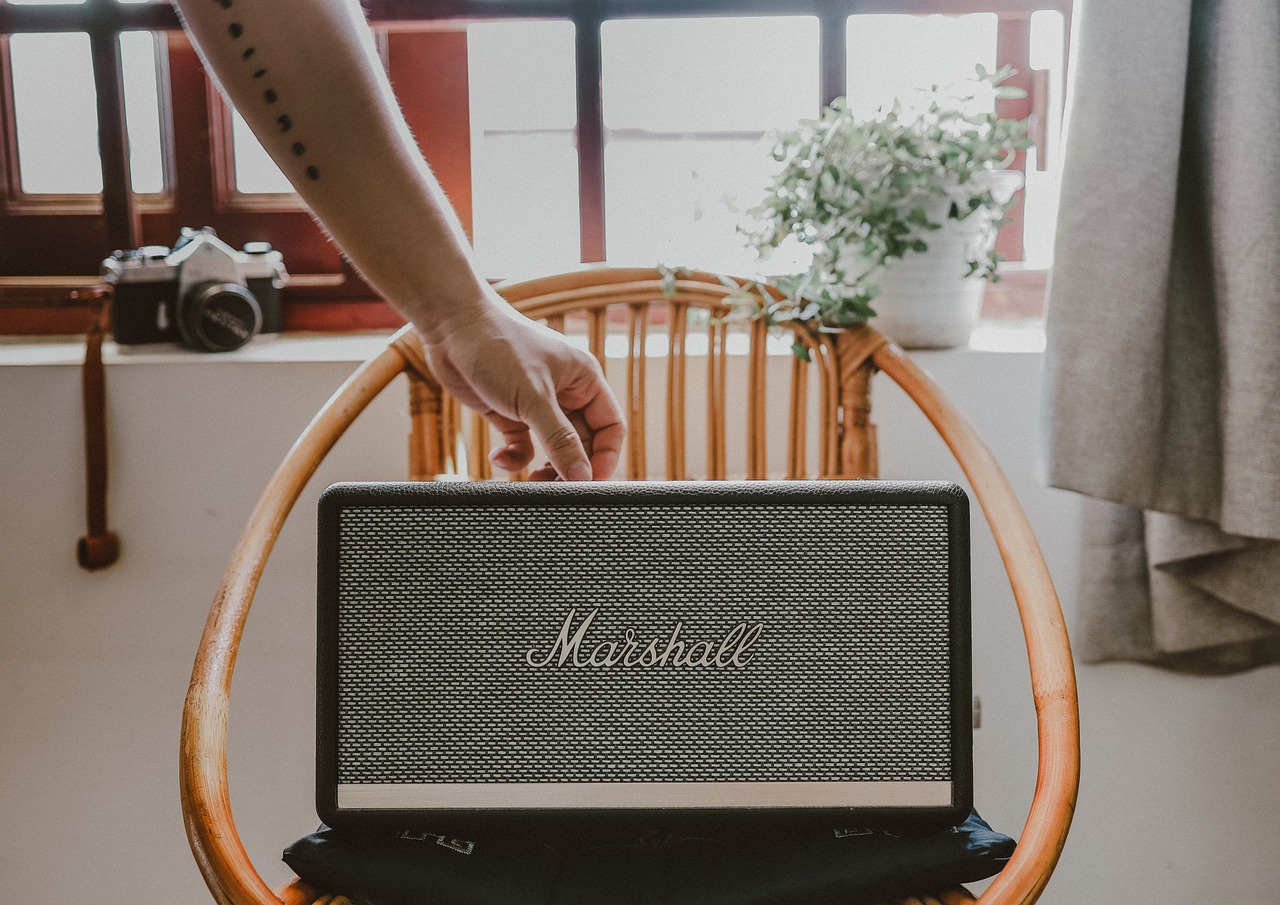
Timeless Designs
When it comes to furniture, hold a special place in our hearts and homes. They are the kind of pieces that never go out of style, effortlessly blending with various interior aesthetics. Think about it: a classic mid-century modern chair or a rustic farmhouse table can fit perfectly in both contemporary and traditional settings. This versatility is one of the many reasons why investing in eco-friendly furniture is a smart choice.
Eco-friendly furniture often features designs that are not only functional but also aesthetically pleasing. These pieces are crafted with an eye for detail and a commitment to sustainability, ensuring that they not only look good but are also made to last. For instance, many eco-friendly designs incorporate natural materials like reclaimed wood, which adds unique character and warmth to any space. Each scratch, knot, and grain tells a story, making your furniture a conversation starter.
Moreover, timeless designs often prioritize simplicity and elegance over fleeting trends. This means that rather than following the latest fad, these pieces focus on clean lines and classic shapes that can withstand the test of time. By choosing eco-friendly furniture with timeless designs, you are not only making a purchase but also investing in a legacy that can be passed down through generations.
Here are a few characteristics that define in eco-friendly furniture:
- Versatility: They can seamlessly fit into various decor styles.
- Quality Materials: Made from sustainable resources that enhance durability.
- Functional Aesthetics: Designed to be both beautiful and practical.
- Enduring Appeal: Resistant to trends, ensuring they remain stylish for years.
In addition, many eco-friendly furniture makers draw inspiration from nature, incorporating organic shapes and textures that create a soothing atmosphere in your home. This connection to nature not only enhances the visual appeal but also promotes a sense of well-being. Imagine lounging on a beautifully crafted sofa made from organic cotton, surrounded by wooden accents that echo the tranquility of the great outdoors.
Ultimately, choosing eco-friendly furniture with timeless designs is about making a conscious choice for your home and the planet. As you curate your living space, think about how these pieces can not only enhance your environment but also reflect your values. By investing in furniture that is designed to last, you are making a statement about sustainability and style that resonates far beyond your own home.
Here are some common questions people have about eco-friendly furniture and timeless designs:
- What materials are commonly used in eco-friendly furniture? Eco-friendly furniture is typically made from sustainable materials such as reclaimed wood, bamboo, and organic fabrics.
- How can I determine if furniture is truly eco-friendly? Look for certifications such as FSC (Forest Stewardship Council) or Greenguard, which indicate sustainable practices in sourcing and manufacturing.
- Are timeless designs more expensive than trendy pieces? While the initial investment may be higher, timeless designs often prove to be more cost-effective in the long run due to their durability and enduring appeal.
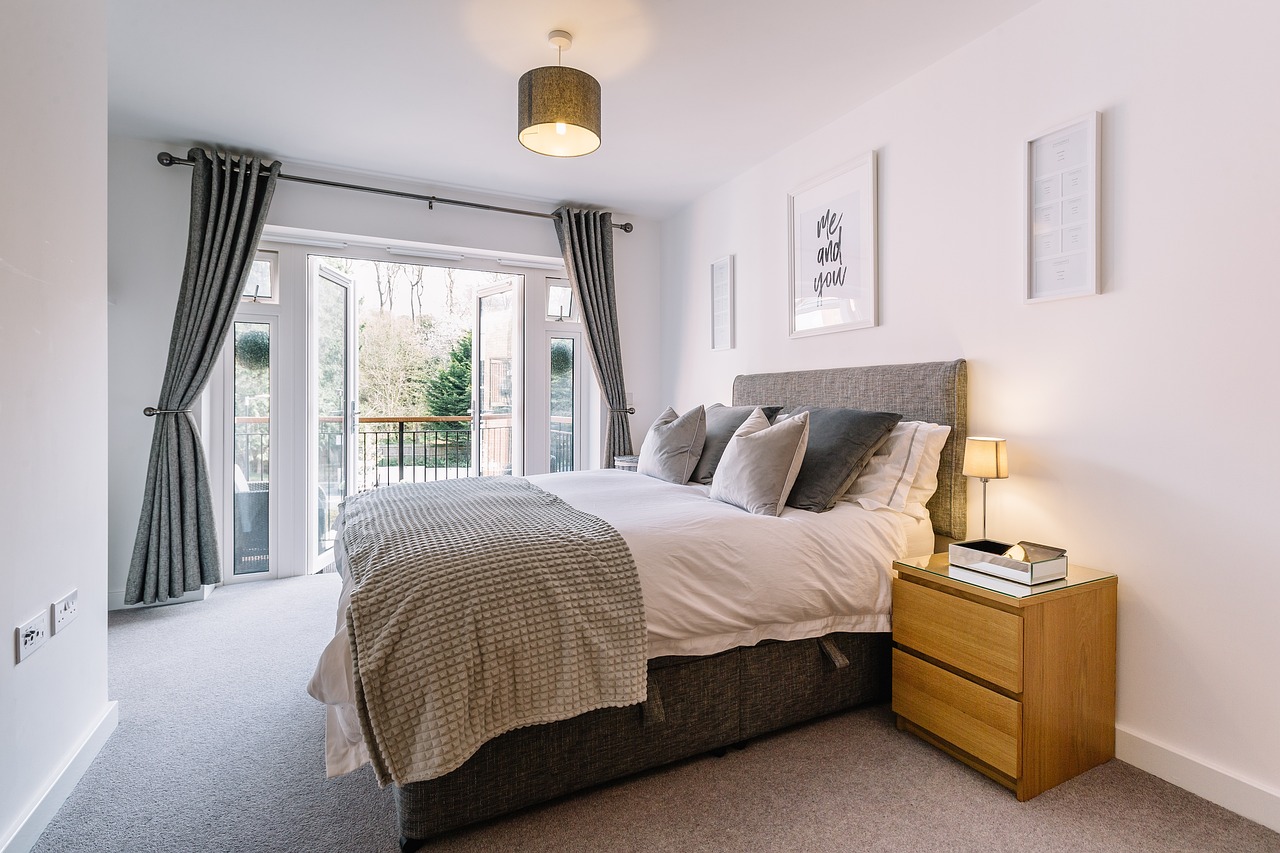
Natural Materials
When it comes to eco-friendly furniture, the use of is a game changer. These materials not only enhance the aesthetic appeal of your home but also promote a deeper connection with the environment. Imagine walking into a room filled with the warmth of wood, the softness of organic cotton, or the unique texture of bamboo. It’s like bringing a piece of nature indoors! Natural materials are derived from sustainable sources, which means they are harvested in a way that doesn’t harm the environment. This is crucial in a world where deforestation and pollution are rampant.
One of the most popular natural materials used in eco-friendly furniture is solid wood. Unlike particle board or MDF, solid wood is durable and can last for generations if cared for properly. It not only looks beautiful but also ages gracefully, developing a patina that tells a story over time. Furthermore, many furniture makers are now sourcing their wood from sustainably managed forests, ensuring that their impact on the planet is minimal. This practice not only helps in preserving forests but also supports biodiversity.
Another fantastic natural material is bamboo. Known for its rapid growth, bamboo is one of the most sustainable materials available. It requires very little water and no pesticides to thrive, making it an eco-conscious choice. Furniture made from bamboo is not only stylish but also incredibly strong and lightweight. Whether it's a sleek bamboo chair or a sturdy table, this material can elevate the look of any space while being gentle on the planet.
In addition to wood and bamboo, organic fabrics like cotton, linen, and hemp are frequently used in eco-friendly furniture. These fabrics are cultivated without harmful pesticides or synthetic fertilizers, making them safer for both the environment and your home. When you choose furniture upholstered in organic materials, you're not just making a style choice; you're also making a health-conscious decision. These fabrics are breathable and less likely to emit harmful chemicals, contributing to a healthier indoor air quality.
Furthermore, natural materials often come with unique characteristics that can’t be replicated. For instance, each piece of wood has its own grain pattern, ensuring that your furniture is one-of-a-kind. This individuality adds a layer of charm and character to your home, making it feel warm and inviting. When you invest in furniture made from natural materials, you're not just purchasing a product; you're acquiring a piece of art that has its own story and personality.
In summary, choosing furniture made from natural materials not only enhances the visual appeal of your space but also supports sustainable practices that benefit the planet. By opting for these materials, you're making a conscious choice that reflects your values and commitment to a healthier environment.
- What types of natural materials are commonly used in eco-friendly furniture?
Common natural materials include solid wood, bamboo, and organic fabrics like cotton and linen. - Are natural materials more expensive than synthetic options?
While the initial cost may be higher, natural materials often offer better durability and longevity, making them more cost-effective over time. - How can I ensure the natural materials are sustainably sourced?
Look for certifications such as FSC (Forest Stewardship Council) for wood products or GOTS (Global Organic Textile Standard) for fabrics. - Do natural materials require special care?
Yes, natural materials may need specific cleaning and maintenance routines to preserve their quality and appearance over time.
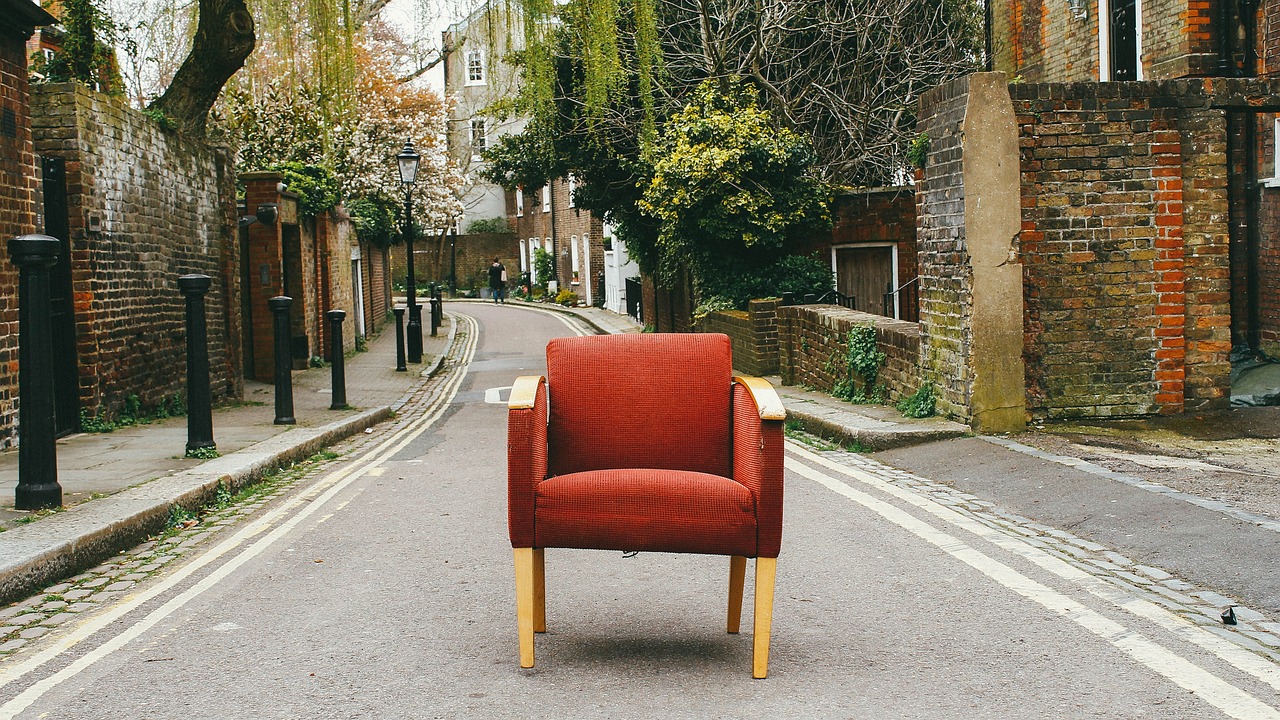
Supporting Sustainable Practices
When you choose eco-friendly furniture, you're not just making a purchase; you're making a statement about the kind of world you want to live in. By opting for sustainable options, you actively support companies that are committed to protecting the environment and promoting ethical practices. This decision has a ripple effect that goes beyond your home, encouraging the entire industry to adopt greener methods.
One of the most compelling aspects of supporting sustainable practices is the concept of ethical sourcing. This means that the materials used in the production of furniture are obtained responsibly, ensuring that ecosystems are preserved and communities are respected. For instance, many eco-friendly manufacturers prioritize wood that is certified by organizations like the Forest Stewardship Council (FSC), which guarantees that the timber is harvested sustainably. This not only protects forests but also supports the livelihoods of those who depend on them.
Moreover, investing in eco-friendly furniture often involves supporting local artisans. These craftsmen and women are dedicated to creating beautiful, high-quality pieces using sustainable materials. By purchasing from local artisans, you contribute to the local economy and help preserve traditional skills that might otherwise be lost. This connection to the community fosters a sense of shared responsibility towards the environment and promotes a sustainable economy. It’s like choosing to buy a warm loaf of bread from a neighborhood bakery instead of a mass-produced loaf from a supermarket; it’s about quality, care, and community.
Additionally, many eco-friendly furniture companies are transparent about their production processes. They often share information about their supply chains, allowing consumers to make informed decisions. This transparency is crucial because it builds trust between the manufacturer and the consumer. By knowing where and how the materials are sourced, you can feel good about your purchase, knowing that it aligns with your values.
In essence, supporting sustainable practices in the furniture industry is a powerful way to advocate for the environment. When consumers prioritize eco-friendly options, they send a clear message that sustainability matters. This collective action can lead to significant changes in how furniture is produced and marketed. So, every time you choose a piece of eco-friendly furniture, remember that you're not just enhancing your home; you're also contributing to a healthier planet.
- What is eco-friendly furniture? Eco-friendly furniture is made from sustainable materials that are sourced responsibly, minimizing environmental impact.
- How does eco-friendly furniture benefit the environment? It reduces waste, conserves resources, and encourages sustainable practices in the furniture industry.
- Is eco-friendly furniture more expensive? While the initial cost may be higher, its durability often leads to long-term savings.
- What materials are commonly used in eco-friendly furniture? Common materials include reclaimed wood, bamboo, and organic fabrics.
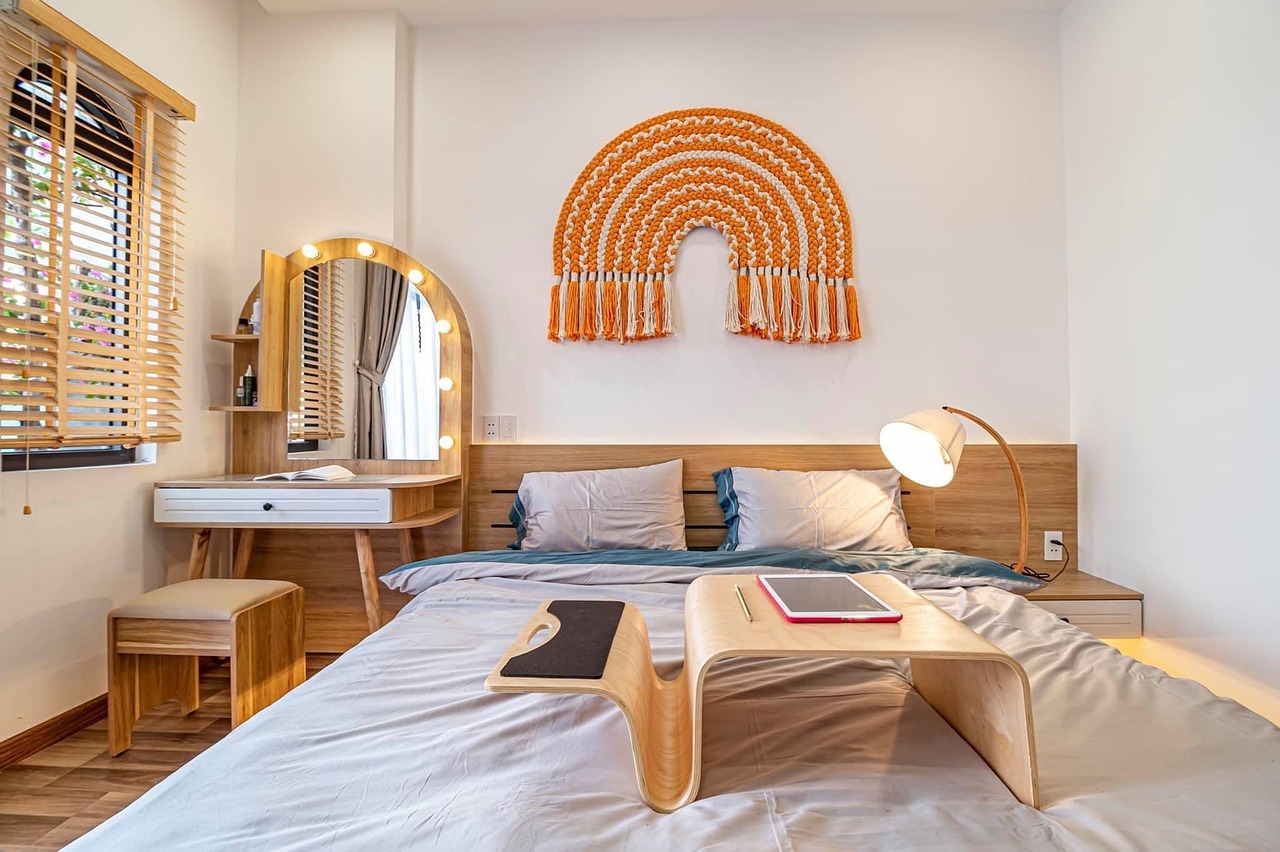
Ethical Sourcing
When it comes to eco-friendly furniture, one of the standout features is the concept of . This means that the materials used in creating these beautiful pieces are obtained in a way that is not only responsible but also respects both the environment and the communities involved. Imagine a world where every chair, table, or sofa you buy contributes to the well-being of the planet and its people. Sounds great, right? Well, that’s the promise of ethical sourcing.
So, what exactly does ethical sourcing entail? It involves a commitment to ensuring that the materials are harvested in a sustainable manner, which often includes:
- Responsible forestry practices: This means that trees are cut down in a way that allows forests to regenerate, maintaining the ecosystem.
- Fair labor practices: Workers involved in the production process are treated fairly, receiving a living wage and safe working conditions.
- Community engagement: Companies often collaborate with local communities to ensure that their sourcing practices benefit the local economy.
By supporting brands that prioritize ethical sourcing, you are not just purchasing furniture; you are making a statement about your values. You are saying that you care about the origins of your furniture and the impact it has on the world. This conscious decision helps to protect ecosystems and promote social equity.
Moreover, ethical sourcing often leads to higher quality products. When companies focus on sustainability, they tend to invest in quality craftsmanship and durable materials that stand the test of time. This means that your investment in eco-friendly furniture not only looks good in your home but also supports practices that are good for the planet.
In conclusion, ethical sourcing is not just a trend; it's a movement towards a more sustainable and equitable world. By choosing furniture that is ethically sourced, you are aligning your home with your values and contributing to a brighter future for everyone.
1. What is ethical sourcing?
Ethical sourcing refers to the process of ensuring that the materials used in products are obtained in a responsible manner, considering the environmental impact and the rights of workers involved in production.
2. How can I identify ethically sourced furniture?
Look for certifications or labels that indicate sustainable practices, such as FSC (Forest Stewardship Council) for wood products or other eco-labels that signify adherence to ethical standards.
3. Is ethical furniture more expensive?
While the initial cost may be higher due to the quality and sustainable practices, ethical furniture often proves to be more cost-effective in the long run due to its durability.
4. Can I find ethical furniture at affordable prices?
Yes! Many companies are now offering a range of eco-friendly furniture at various price points, so you can find something that fits your budget without sacrificing your values.

Local Artisans
When you think about eco-friendly furniture, it's easy to get lost in the big brands and mass-produced items that claim to be sustainable. But let’s not forget the heart and soul of this movement—. These talented individuals craft furniture with a passion that’s hard to replicate in a factory setting. They pour their creativity and skills into each piece, ensuring that every item is not just a product but a work of art.
Supporting local artisans means you’re not just buying furniture; you’re investing in your community. Each purchase helps sustain local economies and encourages traditional craftsmanship. When you choose to buy from these artisans, you’re also supporting a sustainable economy that prioritizes ethical sourcing and environmentally friendly practices. It’s a win-win situation where your home gets a unique touch while contributing to a greener planet.
Moreover, local artisans often use reclaimed or sustainably sourced materials, which minimizes waste and reduces the demand for new resources. This approach not only lessens the environmental impact but also adds character to the furniture. Imagine owning a table made from reclaimed wood that tells a story of its own—how cool is that?
Here’s a quick look at the benefits of supporting local artisans:
- Unique Designs: Each artisan has a distinct style, so you're likely to find pieces that truly reflect your personality.
- Quality Over Quantity: Local artisans often prioritize craftsmanship, resulting in durable and high-quality furniture.
- Community Impact: Your purchase supports local jobs and helps keep traditional skills alive.
In a world where mass production often overshadows individuality, choosing to invest in furniture crafted by local artisans not only enhances your home’s aesthetic but also fosters a sense of community and responsibility. So next time you’re in the market for furniture, consider seeking out those local talents—your home and the environment will thank you!
Q: What are the benefits of buying from local artisans?
A: Purchasing from local artisans supports the local economy, ensures unique and high-quality products, and promotes sustainable practices.
Q: How do I find local artisans?
A: You can find local artisans through craft fairs, farmer's markets, online marketplaces, or social media platforms that focus on handmade goods.
Q: Is eco-friendly furniture more expensive?
A: While the initial cost may be higher, eco-friendly furniture often lasts longer, making it more cost-effective in the long run.
Q: What materials do local artisans typically use?
A: Many local artisans use reclaimed wood, organic fabrics, and non-toxic finishes, all of which contribute to a more sustainable product.
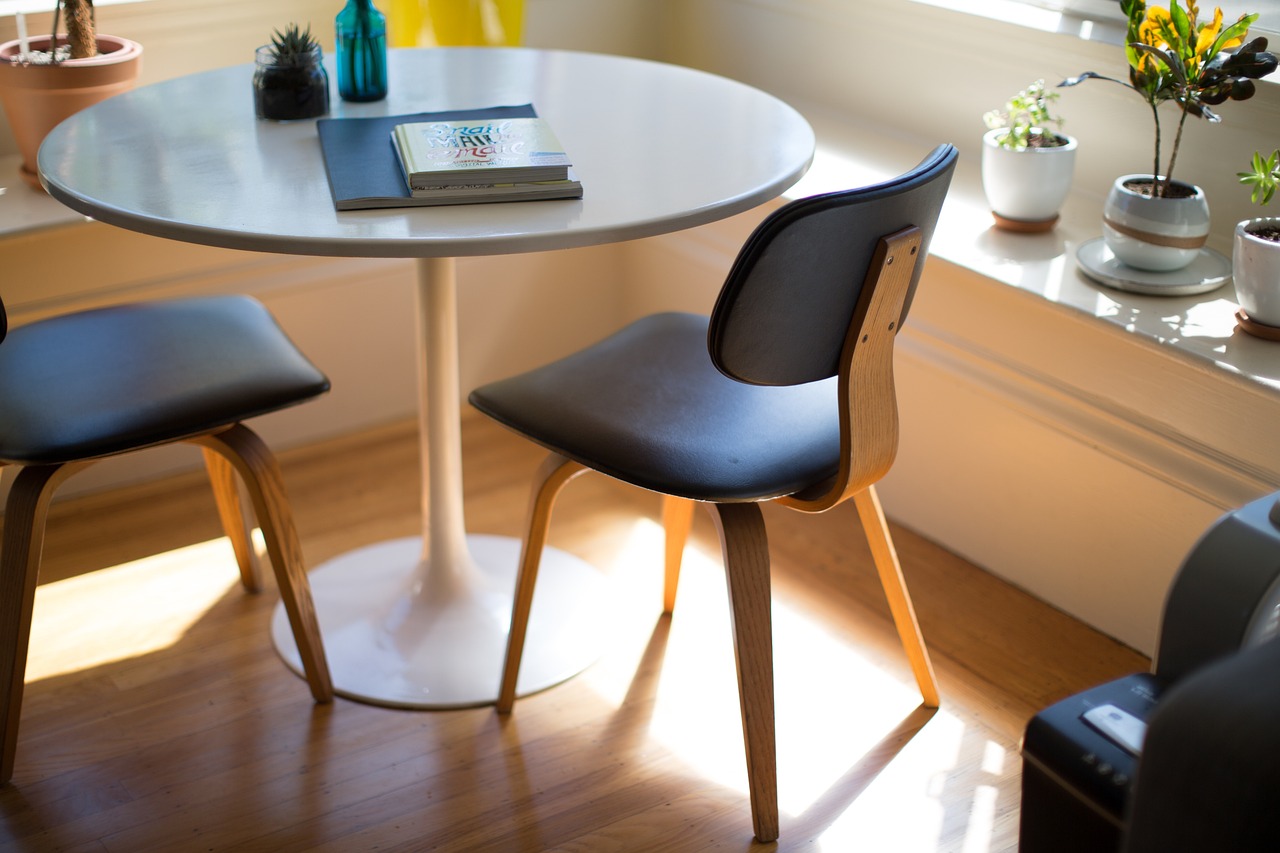
Conclusion
Investing in eco-friendly furniture is more than just a trend; it's a significant step towards a healthier planet and a sustainable future. By making conscious choices about what we bring into our homes, we not only enhance our living spaces but also contribute to the well-being of our environment. It's like planting a seed for a better tomorrow—every piece of eco-friendly furniture is a small but impactful contribution to a larger movement.
When you choose eco-friendly options, you are embracing a lifestyle that values sustainability and health. You are supporting practices that reduce waste, conserve resources, and promote ethical sourcing. Imagine the difference we can make collectively when we all choose to invest in furniture that is not only beautiful but also kind to our planet. By opting for non-toxic materials, durable craftsmanship, and timeless designs, we are creating homes that reflect our values and commitment to a greener future.
Moreover, the aesthetic appeal of eco-friendly furniture cannot be overlooked. With their unique designs and natural materials, these pieces not only elevate the look of our spaces but also create a sense of tranquility that connects us to nature. It's like bringing a piece of the outdoors inside, enhancing our well-being and creating a calming environment.
In essence, choosing eco-friendly furniture is a powerful way to express our values and make a positive impact. It's about making informed decisions that benefit not just ourselves but also the world around us. So, the next time you're in the market for new furniture, consider the broader implications of your choices. Remember, each purchase is a vote for the kind of world you want to live in.
- What is eco-friendly furniture? Eco-friendly furniture refers to products made from sustainable materials that have minimal impact on the environment, often using non-toxic finishes and fabrics.
- Why is eco-friendly furniture more expensive? While the initial cost may be higher, eco-friendly furniture is typically made from high-quality materials and craftsmanship, leading to greater durability and longevity.
- How can I identify eco-friendly furniture? Look for certifications such as FSC (Forest Stewardship Council) or Greenguard, which indicate that the furniture meets specific environmental standards.
- Are there any health benefits to eco-friendly furniture? Yes, eco-friendly furniture often uses non-toxic materials that can improve indoor air quality and reduce exposure to harmful chemicals.
- Can eco-friendly furniture fit into any home decor style? Absolutely! Eco-friendly furniture comes in a variety of designs and styles, making it easy to find pieces that complement any aesthetic.
Frequently Asked Questions
- What are the main benefits of eco-friendly furniture?
Eco-friendly furniture offers numerous benefits, including sustainability, improved indoor air quality, and a unique aesthetic appeal. By choosing these products, you contribute to reducing waste and conserving resources while also enhancing your living space with beautiful, natural materials.
- How does eco-friendly furniture impact my health?
Eco-friendly furniture is often made from non-toxic materials that can significantly enhance indoor air quality. Unlike conventional furniture, which may emit harmful volatile organic compounds (VOCs), eco-friendly options help create a healthier home environment, reducing health risks associated with harmful chemicals.
- Are eco-friendly furniture options durable?
Absolutely! Many eco-friendly furniture pieces are designed with durability in mind, using sustainable materials that can withstand wear and tear. This means you can enjoy your furniture for years to come, making it a smart investment in the long run.
- What materials are commonly used in eco-friendly furniture?
Eco-friendly furniture is often crafted from natural materials such as reclaimed wood, bamboo, and organic fabrics. These materials not only reduce environmental impact but also provide a warm, inviting aesthetic that connects your home to nature.
- Is eco-friendly furniture more expensive?
While the upfront cost of eco-friendly furniture may be higher, it can be more cost-effective over time. Due to its durability and longevity, you’ll likely spend less on replacements, making it a wise financial choice in the long run.
- How can I ensure that the furniture I buy is truly eco-friendly?
To ensure you're purchasing genuine eco-friendly furniture, look for certifications such as Forest Stewardship Council (FSC) or Greenguard. Additionally, research the company’s sourcing practices and commitment to sustainability to make informed choices.
- Can eco-friendly furniture fit into any home decor style?
Yes! Eco-friendly furniture often features timeless designs and natural materials that can complement a variety of interior styles. Whether your home is modern, rustic, or traditional, you can find eco-friendly pieces that enhance your space beautifully.
- What is ethical sourcing in the context of furniture?
Ethical sourcing refers to the responsible procurement of materials used in furniture production. This practice ensures that the materials are obtained in a way that protects ecosystems and supports the communities involved in the supply chain, promoting a more sustainable economy.
- How does buying eco-friendly furniture support local artisans?
By choosing eco-friendly furniture, you often support local artisans who prioritize sustainable practices. This not only fosters community growth but also encourages the preservation of traditional craftsmanship, contributing to a more sustainable economy.



















